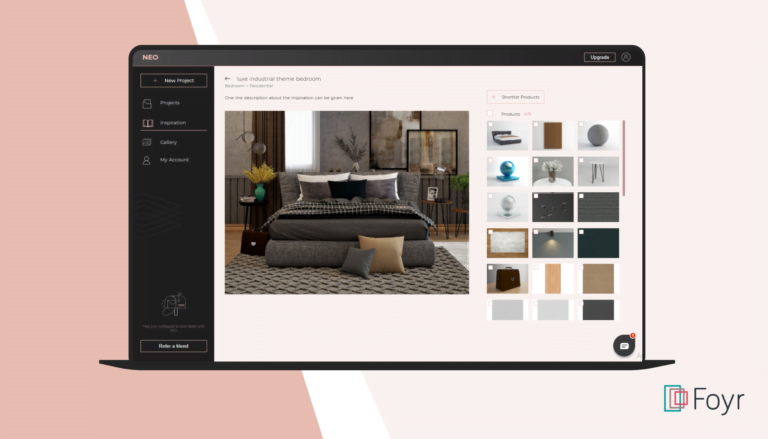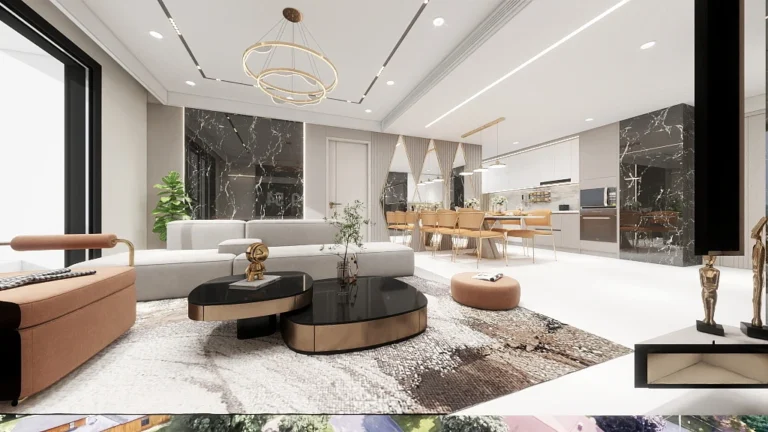Working from home has become the norm for many since the global pandemic reshaped how we think about traditional office spaces. What was once a temporary solution has now evolved into a long-term lifestyle shift. Thanks to advancements in information technology, it’s now possible to transform any room into a fully functional and productive workspace—with a bit of smart interior design.
While some people were already accustomed to working from home, others have found the transition challenging. The absence of a structured office environment can feel awkward at first, making it harder to focus and stay motivated.
But with the right home office setup, you can create a space that supports productivity, creativity, and mental well-being. We’ve gathered expert tips from leading interior designers in Kerala to help you design a home workspace that balances comfort with functionality.
Whether you have a dedicated room or just a small corner to spare, these design suggestions will help you optimize your space, improve concentration, and create a work-from-home setup that truly works for you.
Planning the workspace
Every job demands a unique workspace setup tailored to its specific needs. With the IT sector leading the way, many home workspaces now follow a streamlined, minimalist design that suits a wide range of professions. This spartan yet versatile approach allows you to customize your workspace to fit your role and preferences.
Your home workspace can be a dedicated room, a cozy cubicle, or even a well-partitioned corner within a multi-purpose room. The key is having a designated area solely for work, separated from the everyday distractions of home life. Even if you live alone, household noises and activities can easily interrupt your focus.
When designing your workspace, interior designers in Kerala recommend choosing a spot that offers ample room for movement and sufficient storage. Even if your current setup is simple, plan ahead for potential future needs—like adding an extra monitor, filing cabinets, or a bookshelf.
If you already own essential furniture, measuring their dimensions will help you pick the perfect location for your workspace. Thoughtful planning ensures your home office is both functional now and adaptable for the future.
Workspace Ergonomics: Comfort That Supports Productivity
Designing a home workspace often comes with a relaxed mindset—free from the formality of a corporate office. While this informal approach can enhance comfort and reduce stress, it also carries the risk of becoming too casual, which may lead to long-term health issues and reduced productivity.
Neglecting ergonomics can result in common problems like back pain, neck strain, and eye fatigue, all of which affect your performance over time. That’s why investing in proper ergonomics isn’t just about comfort—it’s a smart move for your well-being and work efficiency.
According to expert interior designers in Kerala, the foundation of a healthy home office begins with the right desk and chair setup:
- Choose an ergonomic chair that offers lumbar support, adjustable height, and proper cushioning to maintain posture and reduce back strain.
- Opt for a desk that fits your working style—whether it’s a compact unit for your laptop or a wider table for dual monitors, notebooks, or extra workspace.
- Consider desks with built-in storage like drawers or shelves to keep essentials within arm’s reach and eliminate unnecessary clutter.
A thoughtfully designed ergonomic setup can transform your home office into a place where you stay focused, feel comfortable, and work smarter every day.
Keep It Neat and Organized: A Clutter-Free Workspace for Better Focus
A tidy workspace is more than just visually appealing—it’s essential for maintaining focus and boosting productivity. An organized desk sets a positive tone, helping you feel mentally prepared and motivated for the workday ahead.
While the shift to digital workplaces has minimized paper clutter, electronic equipment still brings its own mess, with cables and accessories taking over desk space. Fortunately, you can streamline this easily:
- Use USB hubs, cable organizers, and extension cords to manage wiring and keep your workspace clean.
- Store away non-essential items using inbuilt drawers or desk compartments to free up surface space.
- Keep frequently used tools within reach, and move everything else to nearby shelves or cabinets.
Even in the digital age, some analog solutions still prove helpful. A bulletin board might feel old-school, but it’s a practical way to keep important notes and schedules visible—even when your screen is off.
And don’t overlook the basics—a small dustbin tucked in a corner keeps your space tidy and might even add a little fun (perfect for practicing those wastepaper basketball shots when you need a break).
By keeping your home office neat and intentional, you create a workspace that’s both calming and efficient—perfect for long-term productivity.
Ensure Proper Lighting and Ventilation: Create a Bright and Inviting Workspace
In traditional office setups, only top-level executives get the coveted “room with a view.” But at home, you have the freedom to choose any spot with natural light and a pleasant view—no corner office required.
Natural lighting and proper ventilation can dramatically improve the feel and functionality of your home workspace. Placing your desk near a window not only offers a refreshing view but also encourages airflow, helping to prevent the stale, closed-in feeling common in home offices. If the view isn’t ideal, simply angle your desk to benefit from sunlight and cross-ventilation without facing directly outward.
That said, artificial lighting also plays a critical role—especially for night owls or overcast days. A compact desk lamp provides focused illumination, while ambient or mood lighting can enhance the atmosphere. Layered lighting not only improves visibility but can also elevate your mood and reduce eye strain during long working hours.
If your current setup lacks adequate lighting or airflow, consider consulting an interior design expert to rework your space for better comfort, productivity, and long-term wellness.




